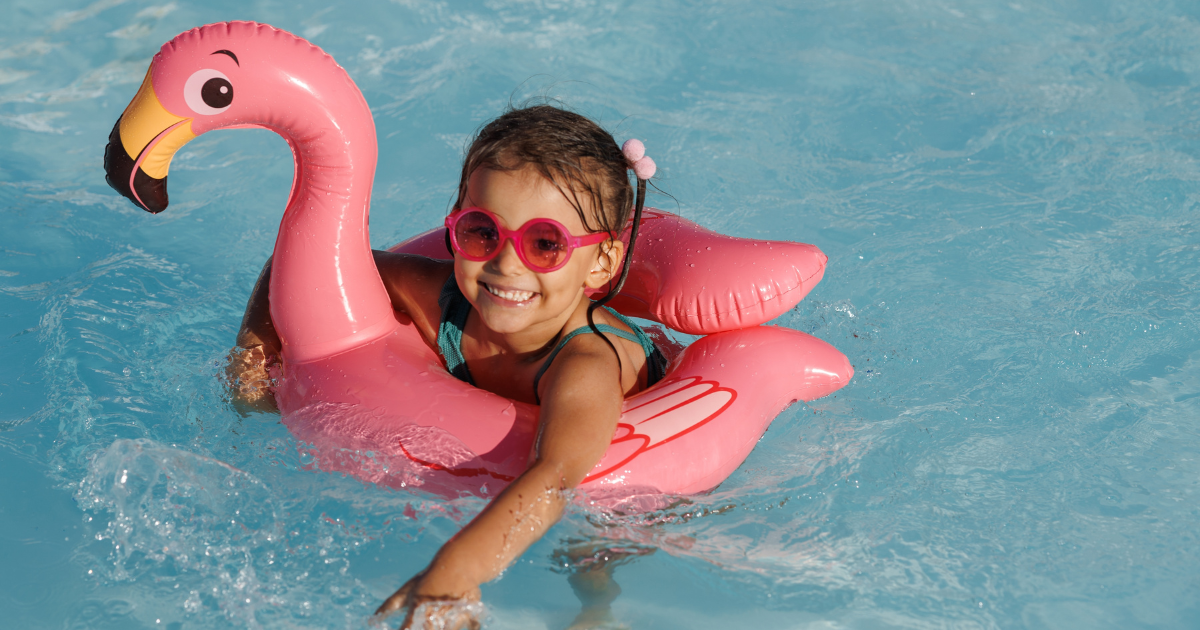Water Safety Tips for Children with Autism: A Parent’s Guide for a Safe, Enjoyable Summer
Written by Behavior Frontiers as part of its Bright Futures series
Summer brings a world of opportunities for children to enjoy the water—whether it’s splashing in the pool, playing at the beach, or running through the backyard sprinkler. For families of children with autism, these activities can be joyful and enriching, especially when water safety is planned ahead of time.
With the right strategies in place, parents and caregivers can help ensure a safe, confident experience around water—one that supports both fun and skill-building.
Why Water Safety Is Especially Important for Kids with Autism
Many children on the autism spectrum are naturally drawn to water. Its movement, sound, and feel can be calming and captivating. But because of differences in safety awareness, sensory processing, and communication, additional precautions are often needed to ensure safe experiences.
Studies have shown that children with autism may be at increased risk for water-related incidents, especially in situations where supervision is limited or access is not secured. In fact, research suggests children with autism are 160 times more likely to die from drowning. This is particularly important for children who tend to wander or elope, a behavior that affects nearly half of children with autism after the age of four.
By taking a proactive approach to water safety, families can help their children build skills, gain confidence, and enjoy water play with peace of mind.
6 Water Safety Tips for Children with Autism
Whether your child is dipping their toes for the first time or already loves to swim, these practical tips can help create a safer, more enjoyable experience for the whole family:
1. Assign a Designated Water Watcher
Always have one adult who is fully focused on supervising the water—without distractions like phones or conversations. Using a visual cue such as a lanyard or specific item of clothing can help everyone know who is “on duty.” Rotate this role every so often to keep supervision fresh and focused.
2. Stay Within Arm’s Reach
When your child is in or near water, stay close enough to provide immediate help if needed. This level of supervision, often called “touch supervision,” can help prevent unsafe situations and also offers comfort and reassurance.
3. Use Clear, Consistent Routines
Children with autism often benefit from predictability. Use simple, repeated language or visual supports to reinforce water safety behaviors, such as:
“Ask before getting in the pool.”
“Stay close to your helper.”
“Wait for an adult to get your toy.”
“Ask for help”
“No running”
“Stop” or “Wait”
“You can swim now”
Visual schedules or social stories can also help prepare children for what to expect before a trip to the pool or beach.
4. Support Sensory Needs
Water can be soothing for some children and overwhelming for others. Let your child set the pace. Consider supports like goggles, swim shirts, or ear protection if needed. Some children benefit from gradual entry into the water or shorter swim times as they build comfort.
5. Secure Access to Water at Home
Fences with self-latching gates, pool covers, and door alarms are great tools to help prevent unsupervised access to water. Even small sources of water like fountains, birdbaths, or buckets should be emptied when not in use.
6. Choose Swim Lessons Tailored for Autism
Look for adaptive or inclusive swim programs in your area. These lessons are often designed to support different learning styles, provide sensory accommodations, and help children progress at their own pace. Instructors may use verbal praise, stickers, or small rewards—positive reinforcement can go a long way in building your child’s confidence and comfort in the water.
At home, you can reinforce this progress by celebrating small wins with your own praise, reward charts, or fun water play between lessons. Consistency and encouragement from both instructors and family can help your child feel more secure and excited to keep learning.
Tips for Caregivers: Creating a Water Safety Plan
Planning ahead can make all the difference in helping your child enjoy water activities safely:
Introduce water play slowly and build comfort over time
Avoid leaving toys or sensory objects near water that may draw your child in unsupervised
Narrate safe behavior out loud (e.g., “We wait for an adult before we go in”)
Practice safety skills in everyday settings, like bathtime, to build familiarity
Be mindful of behaviors that may signal distress or risk of wandering, such as sudden quietness, restlessness, fixation on water, or attempts to leave the area
Caregiver tools like safety checklists and visual reminders can be helpful, especially when shared with other caregivers, therapists, or extended family. You can download a helpful, autism-friendly Water Safety Checklist here, created by the Autism Society of America. It offers simple, actionable steps to help families plan ahead and stay prepared.
The goal of water safety isn’t to limit your child’s experiences—it’s to give them the foundation to enjoy water confidently and securely. With the right support, swimming can promote physical health, emotional regulation, and even social skills.
Every child deserves the chance to explore and have fun in the water. With preparation, patience, and the right tools, families can create safe, joyful summer memories that last a lifetime.
Interested in ABA Therapy for Your Child?
At Behavior Frontiers, we provide compassionate Applied Behavior Analysis (ABA) therapy tailored to each child’s unique strengths and needs. Our research-backed programs focus on skill-building, communication, social development, and safety—including important life skills like water safety and following routines.
If your family is looking to begin ABA services or explore personalized support, contact us for a free consultation by calling 888-922-2843 or by filling out the form below.
References
Anderson, C., Law, J. K., Daniels, A., Rice, C., Mandell, D. S., Hagopian, L., ... & Law, P. A. (2012). Elopement and Wandering Behavior Among Children With Autism Spectrum Disorders. Pediatrics, 130(5), 870–877. https://doi.org/10.1542/peds.2012-0762
Guan, J., & Li, G. (2017). Injury Mortality in Individuals With Autism. American Journal of Public Health, 107(5), 791–793. https://doi.org/10.2105/AJPH.2017.303696
Autism Society of America. (2024). Safety on the Spectrum™: Water & Wandering Program

